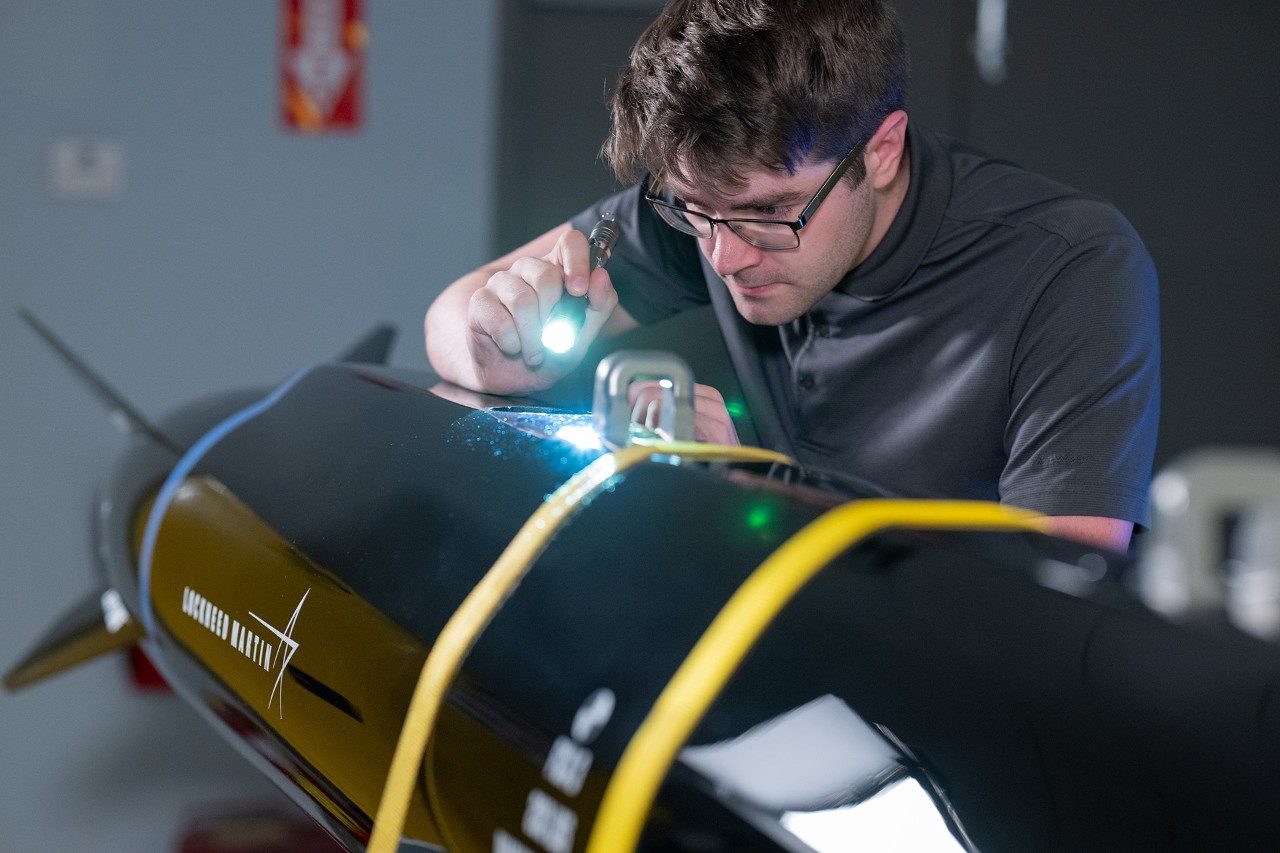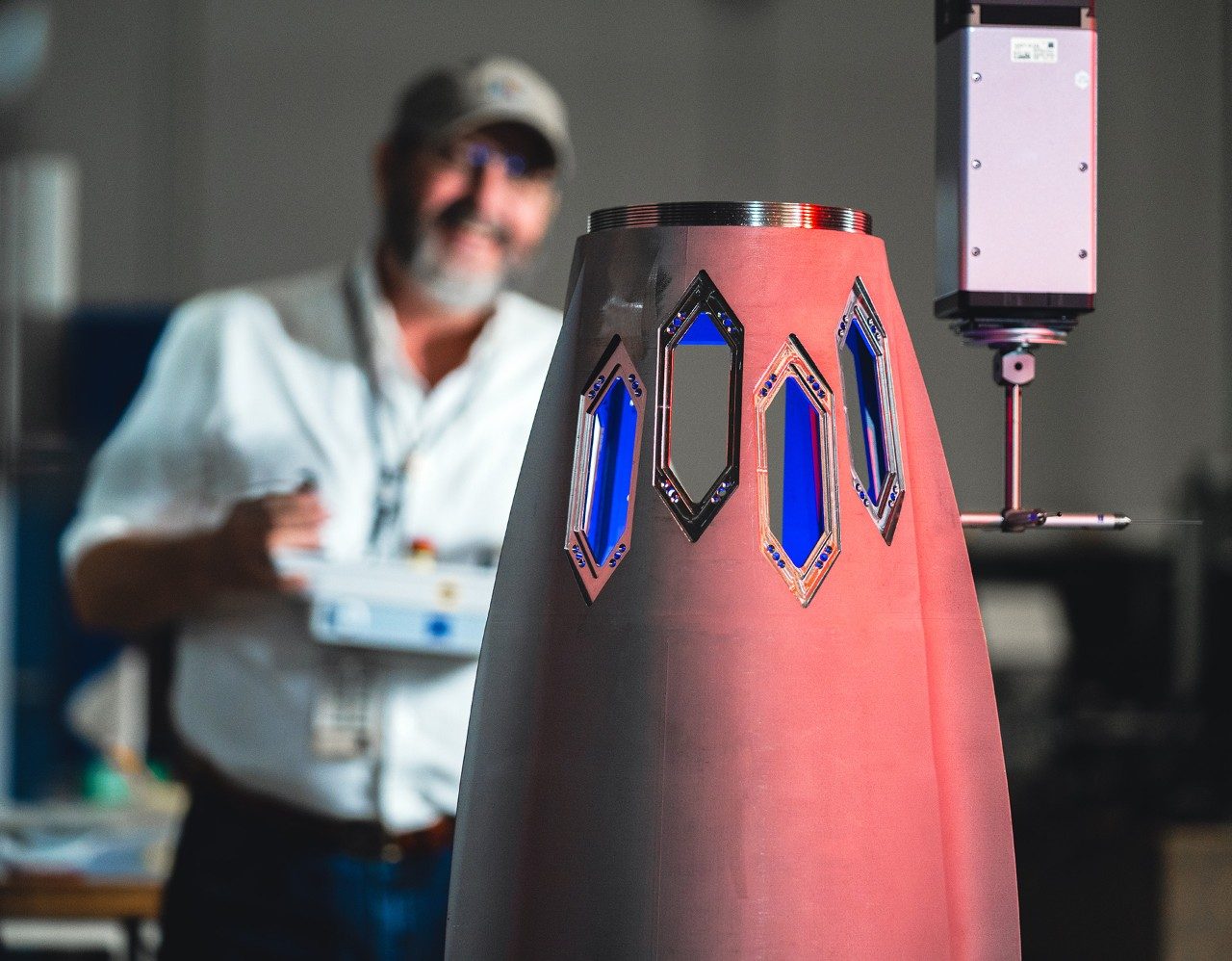A Hypersonic Missile That’s More Than Ready
Lockheed Martin’s Mako™ hypersonic multi-mission missile delivers range, speed, lethality and affordability attributes to fill multiple operational voids with one missile.
Hypersonic missiles take time to develop. Especially those compact enough to stow in the internal bay of stealth aircraft for close-up launches—and innovative enough to maneuver in the hypersonic regime.
Lockheed Martin’s multi-mission Mako missile is certainly no exception— it’s been in exclusive development by Lockheed Martin for the past seven years. And yes, it’s compact and innovative. It also supported the U.S. Air Force’s first digital acquisition missile program and scored high in maturity.
Named after the fastest shark in the seas, Mako blazes down on time-sensitive targets when every second counts. Able to maneuver in a high-altitude hypersonic regime, it penetrates advanced air-defense systems to engage these high-value targets at or below hypersonic speeds, depending on mission requirements.
As an open, multi-mission hypersonic missile, Mako can support strike, maritime strike, counter-air defense and other missions. It deploys from 5th-gen fighters for stand-in strike and has the reach to launch at operationally significant ranges that keep aircraft at safe standoff distances.
Weighing in at 1,300 pounds, Mako packs its multi-mission capability into an airframe that’s 13 inches in diameter and 13 feet long. It’s been physically fit-checked externally on a variety of aircraft, including the F-35, F/A-18, F-16, F-15 and P-8, and internally on the F-22 and F-35C. Any aircraft with 30-inch lugs can carry it, including bombers.
Mako is among Lockheed Martin’s first generation of missiles designed entirely in a digital engineering ecosystem. It benefits from model-based systems engineering best practices and an integrated, model-based enterprise supports the life cycle of the weapon.
Due to its digital and open architecture design, Mako supports rapid integration of mission-specific elements like warheads and seekers, which empowers users to upgrade Mako with no proprietary entanglements. It enables them to keep pace with evolving threats.
And it has been digitally developed with producibility in mind. Manufacturing engineers have been in the loop from the start to ensure a seamless transition into production.
Lockheed Martin offered Mako for the U.S. Air Force’s Stand-in Attack Weapon (SiAW) program. While Lockheed Martin chose not to continue into phase 2, Mako benefits from the innovations and maturation efforts invested in it as the Air Force’s first fully digital acquisition missile.
To lower risk and cost, Mako incorporates components from fielded systems and proven supply chains. All subsystems are customer-validated as mature—at technical readiness level 6 or higher.

While Mako is mature and leverages existing components, Lockheed Martin is exploring ways to innovate, to make it more quickly and more affordable. Transformational processes such as an all-digital design and additive manufacturing significantly reduce cost and schedule.
Additive manufacturing enables the production of key components with significant time and cost savings compared to conventional subtractive methods. In Mako’s case, engineers used additive manufacturing to produce the guidance section and fins. The additive guidance section meets all engineering requirements at 1/10th cost and it’s 10 times faster and cheaper than conventional subtractive methods.

Mako, named after the fastest shark in the seas, puts air-launched hypersonic mass on critical targets at operationally significant ranges when every second counts. Its all-digital, open and mature design offers a rapid path to fielding using innovative techniques that lower cost and accelerate schedule. Mako puts customers on a fast track to fielding a game-changing hypersonic capability.
© 2024 Lockheed Martin Corporation. Mako is a registered trademark of Lockheed Martin Corporation.




